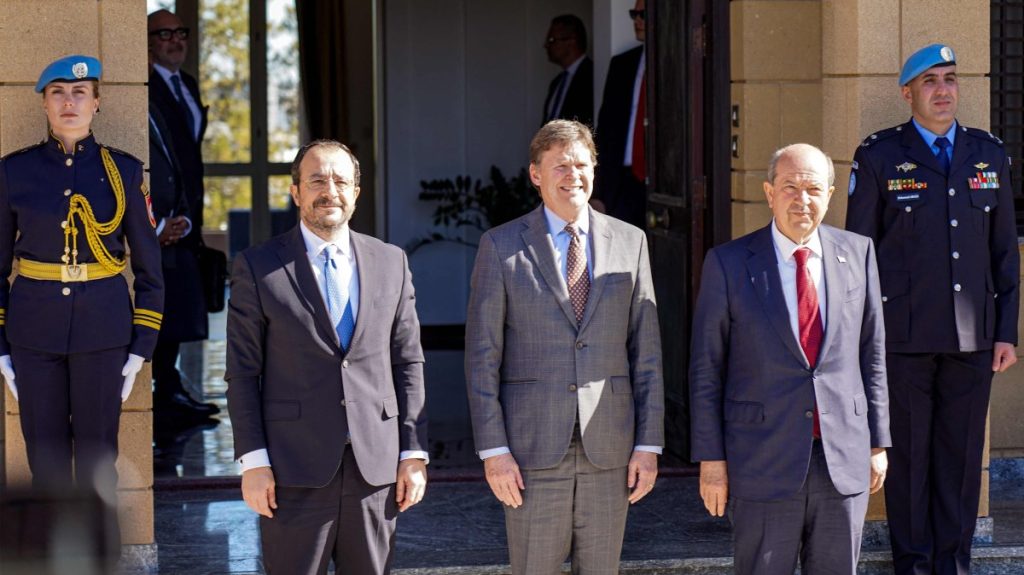Turkish and Greek Cypriot leaders said on Monday that they supported opening more crossing points on the 1974 cease-fire line as an essential step to foster greater confidence-building between their communities on the ethnically divided island.
Nikos Christodoulides, the Greek Cypriot leader, and Turkish Cypriot leader Ersin Tatar discussed the modalities of new checkpoints at a rare meeting hosted by the United Nations in the divided capital Lefkoşa (Nicosia).
But they stopped short of announcing additional easings in movement over the truce line, which runs along a roughly east-west trajectory on the eastern Mediterranean island.
“The leaders both believe that the opening of new crossing points is critical to promote people-to-people contacts, strengthen economic ties and build trust,” a statement released by the U.N. on behalf of both leaders said.
It said another meeting would follow in the coming days.
The Akıncılar-Lympia border crossing could be opened for a start, Tatar reportedly told Christodoulides.
Christodoulides insisted on keeping Erenköy, Tatar told reporters after the meeting.
Erenköy is a coastal exclave of the TRNC and significant to the Turkish side for playing a pivotal role during Türkiye’s 1915 War of Independence, as well as the 1974 Cyprus Peace Operation that eventually led to the foundation of the Turkish Republic of Northern Cyprus (TRNC).
Tatar said he also conveyed to the Greek Cypriot delegation the troubles faced by citizens in the Akıncılar village and surrounding towns and the issues regarding the Pile road, a highway that the TRNC constructed to connect Pile village inside the buffer zone to the TRNC. The construction caused controversy in the summer of 2023 when the U.N. peacekeeping force tried to stop the work, resulting in an altercation with the Turkish Cypriot crews.
Tatar said it was vital to open a second border crossing for vehicles to avoid congestion previously suffered in the Metehan district.
He said he suggested opening the Haspolat border crossing, which sits east of the island and houses a university and a water treatment plant.
Monday’s meeting followed months of negotiations by aides focused on where and how many checkpoints should open in addition to the nine crossings used by thousands daily along a 180-kilometer (116-mile) cease-fire line.
It is estimated that more than a million people use the checkpoints to cross each year, either for employment, education or personal reasons; bonds have tightened since the first pedestrian crossing was opened in April 2003 after almost three decades of isolation.
Greek Cypriots say they do not object to opening one checkpoint advocated by Turkish Cypriots in the east of Nicosia.
They say that in a spirit of reciprocity, Turkish Cypriots should agree to open a checkpoint, which Greek Cypriots want. They have identified two aimed at easing the isolation of some Greek Cypriot-populated regions caused by the jagged geography of the demarcation line.
Greek and Turkish Cypriot political parties have repeatedly urged the political leadership to seal a deal, and civilians added their own call on Friday, a typically busy day where traversing a few meters of a boundary can take up to an hour.
Cyprus was partitioned after a Turkish military operation triggered by a coup attempt on the island sponsored by Greece’s then-ruling military junta after years of inter-communal violence. Peace talks collapsed in mid-2017.


